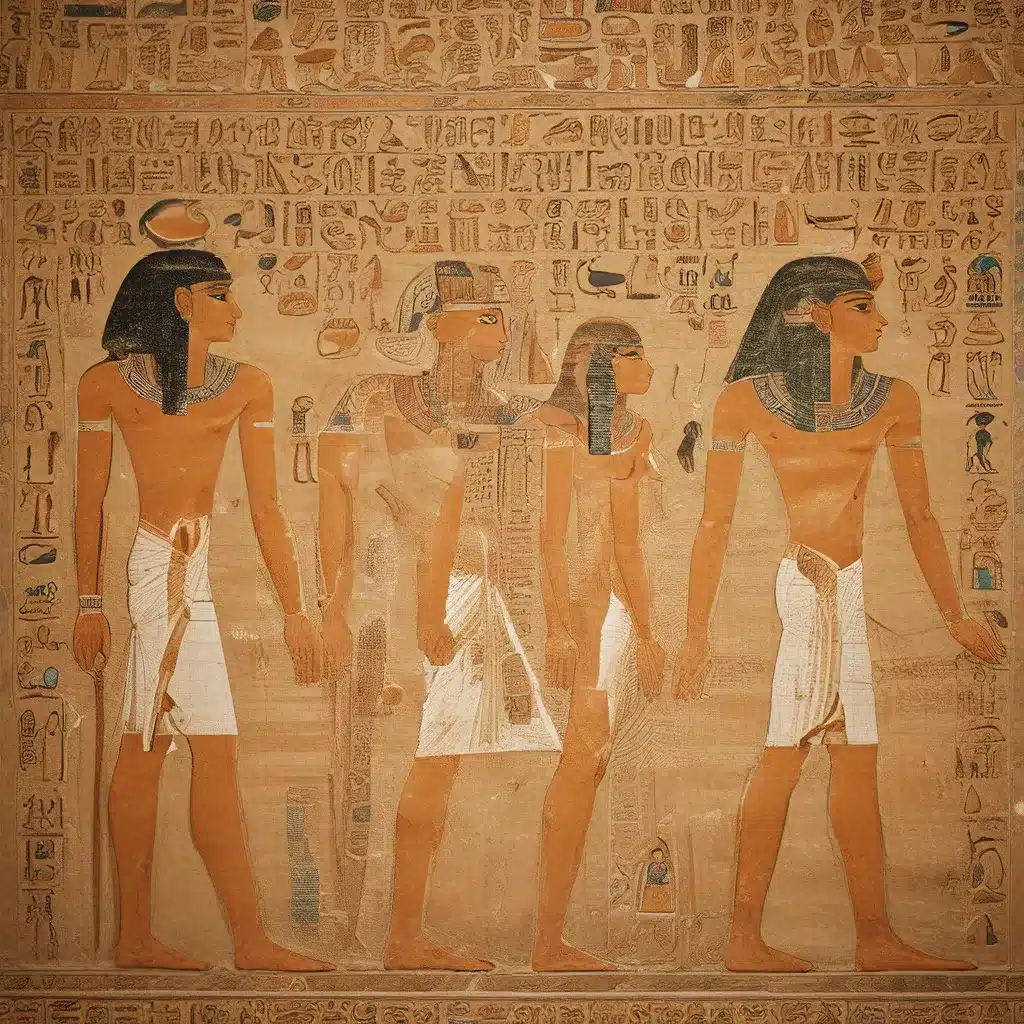
The hieroglyphic script of ancient Egypt has captivated scholars and enthusiasts alike for centuries. As one of the oldest writing systems in the world, dating back over 3,000 years, these intricate symbols have long held the key to unlocking the secrets of a civilization that has left an indelible mark on human history. From the towering monuments adorned with enigmatic inscriptions to the fragile papyri that preserve the wisdom of the Nile Valley, the decipherment of Egyptian hieroglyphics has been a relentless quest, revealing the rich cultural heritage and sophistication of a people who once dominated the ancient world.
The Rosetta Stone and the Breakthrough
The journey to decipher the hieroglyphic code began in 1799 when a French soldier, Pierre-François Bouchard, discovered the Rosetta Stone near the town of Rosetta in the Nile Delta. This remarkable artifact, dating back to the 2nd century BCE, bore an inscription in three different scripts: hieroglyphic, demotic, and Greek. The ability to compare the same text in known and unknown scripts provided the key that scholars had been searching for.
One of the pioneering figures in the quest to decode hieroglyphics was the French linguist Jean-François Champollion. Champollion’s deep understanding of Coptic, a late form of the ancient Egyptian language, proved to be a crucial breakthrough. By meticulously analyzing the cartouches (oval-shaped hieroglyphic symbols) containing the names of Egyptian rulers, Champollion was able to decipher the phonetic values of individual hieroglyphic signs, ultimately cracking the ancient code in 1822.
The Significance of Hieroglyphics
Hieroglyphics were not just a means of written communication in ancient Egypt; they were a vital component of the civilization’s religious and cultural practices. The Egyptians believed that the act of writing and the preservation of sacred texts were essential for ensuring the continuity of their society and the afterlife of the deceased.
Epigraphy, the study and documentation of ancient inscriptions, has been a cornerstone of Egyptology, enabling researchers to unravel the mysteries of this remarkable civilization. From the monumental temple carvings to the intricate funerary texts, hieroglyphic inscriptions have provided a wealth of information about the religious beliefs, social structures, and historical events that shaped the course of ancient Egypt.
Uncovering the Secrets of Padiamenope’s Tomb
One of the most significant and intriguing discoveries in recent years is the tomb of Padiamenope, a high-ranking scribe and priest who lived during the 7th century BCE. Located in the Theban necropolis near modern-day Luxor, this vast and elaborately decorated tomb has captivated Egyptologists, offering a glimpse into the intricate world of ancient Egyptian scribal culture and religious practices.
Champollion’s groundbreaking work in deciphering hieroglyphics paved the way for the ongoing exploration and interpretation of Padiamenope’s tomb, which is covered in thousands of hieroglyphic inscriptions. These inscriptions provide a unique window into the life and beliefs of this remarkable individual, revealing his role as a lector-priest and his close association with the Nubian pharaoh Taharqa.
The Scribes of Deir el-Medina
The extraordinary insights gained from the study of Padiamenope’s tomb are further enhanced by the archaeological discoveries made at the Deir el-Medina site, a village that was home to the skilled artisans and craftsmen responsible for constructing and decorating the royal tombs of the Theban necropolis.
The wealth of ostraca (inscribed pottery fragments and limestone shards) found at Deir el-Medina has shed light on the daily lives, organization, and apprenticeship of these highly specialized workers. These scribes and artisans played a crucial role in preserving the cultural and religious heritage of ancient Egypt through their meticulous work, passing down their skills and knowledge from one generation to the next.
The Evolution of Epigraphic Techniques
The study of ancient Egyptian inscriptions has evolved significantly over the centuries, with advances in epigraphic techniques and the development of innovative digital tools. From the early days of tracing and sketching to the introduction of large-format photography and the recent advent of photogrammetry, the field of epigraphy has constantly sought to capture the nuances and details of these invaluable historical records with ever-increasing accuracy.
Digital epigraphy has further revolutionized the way scholars approach the study of hieroglyphic inscriptions, enabling them to create high-resolution 3D models and interactive visualizations that allow for unprecedented levels of analysis and preservation. As the field of Egyptology continues to evolve, these technological advancements are poised to unlock new layers of understanding about the ancient civilization’s rich cultural heritage.
Conclusion
The decipherment of Egyptian hieroglyphics stands as a testament to the human drive to uncover the secrets of the past. From the groundbreaking work of Champollion to the ongoing explorations of Padiamenope’s tomb and the scribes of Deir el-Medina, the study of these enigmatic symbols has illuminated the profound significance of ancient Egyptian culture, its religious beliefs, and its enduring impact on the course of human civilization.
As we continue to delve deeper into the mysteries of the Nile Valley, the hieroglyphic inscriptions that adorn its monuments and artifacts remain a vital link to the past, inviting us to engage with the rich tapestry of human history and the timeless stories that have captivated the imagination of scholars and enthusiasts alike. By decoding these ancient writings, we gain a richer understanding of our shared past and the remarkable achievements of the ancient Egyptians, whose legacy continues to inspire and enlighten us to this day.


